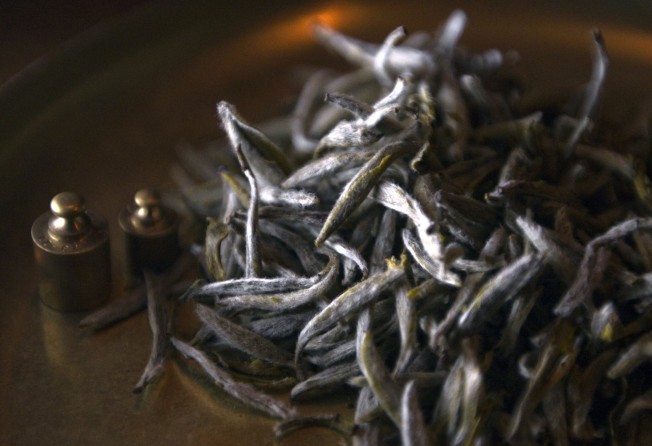
The best Chinese, Japanese, Indian and English teas, an exceptional tea-drinking experience – from a French company? The story of Mariage Frères
- Founded in 1854, Mariage Frères might have been lost to posterity if a couple of young men hadn’t stepped up in the 1980s and acquired the company
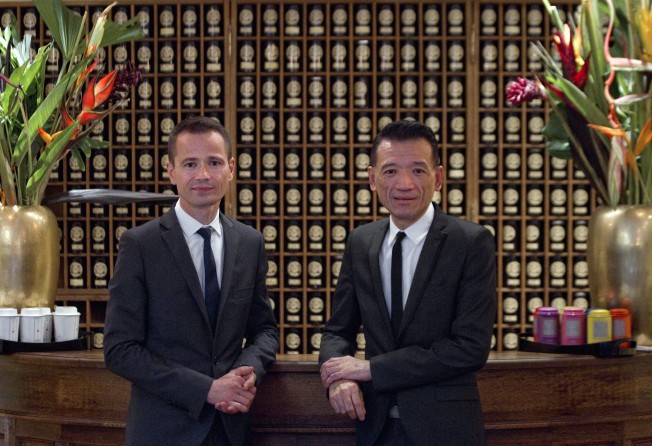
The serious and dapper clerk approached the checkerboard wooden cubicles that line the walls, creaking the floorboards while reaching for a trio of large black tea tins. Removing the lid of one, he gave it a slight shake and, with the tin tipped forward, snapped open a lacy black handheld fan and began to frantically wave the aromas in my direction.
This sort of display is par for the course at the original shop of the Mariage Frères gourmet tea company, nestled on a quiet side street in Paris’ historic Marais neighbourhood, among a mix of art galleries, trendy boutiques and restaurants not far from Hôtel de Ville (city hall).
Filling much of the small space is an L-shaped counter crowded with teapots, beautifully designed tea accoutrements, and brass weights and scales; behind it are deep-set shelves that hold a dazzling array of its celebrated teas.
Choosing is not easy. Mariage Frères offers about 1,000 options from three dozen countries, including lesser-known plantations in Laos, Colombia and New Zealand. Black, green, yellow, white. Blends. Flavoured – there is not much they don’t have, and at €150 (US$168) for 100 grams (3.5 ounces), one of the most expensive is Yin Zhen Suprême, an exceptional silver needle tea from China’s Fujian province that the shop’s catalogue tantalisingly describes as:
Dried leaves: Pearly white and celadon, the buds dazzle with their finesse. The aromatic sweetness of tangerine flower is joined by a mellow, flowery hint of sandalwood and a heady wave of white orchid.
Infused leaves: Jade hemmed with ivory. A fragrant journey, aromas of almond milk and fresh pistachio drift in the wake of noble vanilla and wet peony.
Liquor: Luminous gold. The scent of crumpled wild mulberry leaves blends with the ethereal notes of white flowers. An impalpable fruitiness of mirabelle plum and fresh hazelnut linger over the palate before a harmonious finale of honeyed sugar apple.

China may produce many of the world’s finest, most sought-after teas, but it is this retailer, in and from a country not known for its tea drinking, much less tea culture, that has, over generations, mastered the art of selling them.
Tea arrived in Paris as early as 1635 – a couple of decades before it landed in London – and quickly gained enthusiasts in high society. When the 1789 revolution swept aside the Ancien Régime, tea went with it, and the drink largely disappeared from continental drawing rooms for decades.
It returned to fashion during various 19th century waves of French Anglomania, but unlike in England, where tea filtered down through the classes, across the channel it remained largely a drink of the upper classes. Or the ill.
Despite purveying the rarest of leaves today, from the late 19th century, Mariage Frères sold tea unbranded and wholesale all the way up until the 1980s, when a young Dutchman and a Thai doctoral student at the Sorbonne – neither with any experience in the trade – joined the 125-year-old company.
How was it that these two amateur dabblers transformed an unknown wholesaler into the world’s most exclusive and iconic brand of fine teas? Was it, I wondered – leaving the shop with, of course, far more tea than I had planned on purchasing – just a matter of good marketing infused with French savoir faire, or was there something deeper, more poetic, something more, well, French, involved?
Hailing from a family of colonial merchant traders in the northern French city of Lille, Henri and Edouard Mariage established Mariage Frères in 1854. The two brothers decided to focus on importing tea (as well as some vanilla) and opened a warehouse in the Marais. Importing tea from China, Ceylon and beyond, they sold it wholesale, supplying fine hotels, restaurants, tea rooms and gourmet food shops in Paris.

As the company passed down through generations of family, this original business model remained unaltered. But while clients might sip their teas at the Ritz and Ladurée tea room, none would have heard of Mariage Frères.
And so it went, for generations, and by the early 1980s, it was run by a fourth-generation Mariage, Marthe Cottin. Born in 1901, never married and without heirs, the octogenarian worked with a single employee, and had no ability to pass the torch of patrimony.
“She was the last,” says Franck Desains, Mariage Frères’ current general director. “No one in the family wanted to continue.”
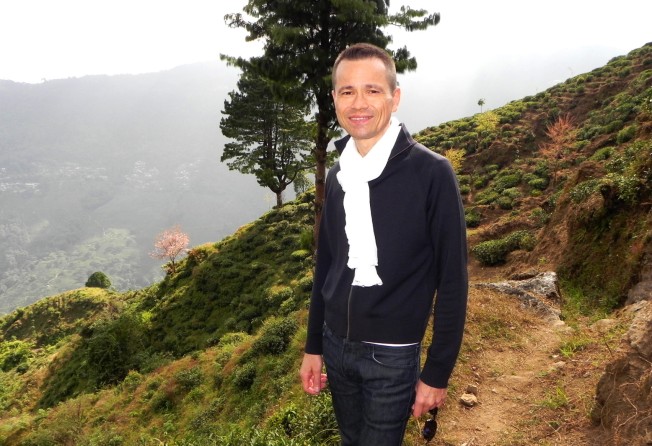
And so the firm would have died, but in 1982, a 30-year-old Dutchman living in Paris named Richard Bueno heard that an elderly woman was looking for a successor for her tea importing firm. Meeting her in a warehouse seemingly unchanged since the 19th century, Bueno was immediately drawn to the romance of the trade. But tea? In France? The market was extremely limited.
He sought the advice of a friend, a 28-year-old Thai doctoral student studying political science at the Sorbonne named Kitti Cha Sangmanee. “When I first entered the ancient warehouse in rue du Cloître-Saint-Merri, it was like entering a different world, where time had come to a halt,” Sangmanee wrote to me in an email.
“All my senses were overwhelmed by this magical place, with its woodwork embalmed with the scent of tea and spices, the ancient wooden chest, the charming soft light. Everything was hypnotic and seducing.”
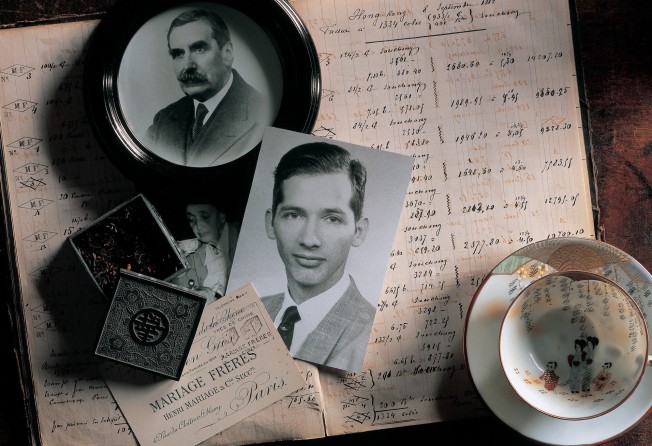
Sangmanee liked to study in the library at the Pompidou Centre just a block from the warehouse, and would often visit Bueno, who was learning everything he could from the elderly Cottin. While the economic outlook was far from optimistic, the company had a lengthy history, a sterling reputation, generations of accumulated tea expertise, a warehouse of riches and a thick ledger of contacts.
Sangmanee soon dropped his studies to join Bueno as an unpaid apprentice. Their friends thought they had gone mad. But as Sangmanee once explained, “It was not a thoughtful decision but a whim, as when one falls in love.”
It was clear to the pair that to move ahead the company must expand, namely offering a larger, more diverse selection of exquisite and exotic teas.
“Not only did such a range not exist in France, but none of the tea-producing countries exported anything other than ordinary varieties,” wrote Alain Stella in Mariage Frères French Tea: Three Centuries of Savoir-Faire (2003). “China was still a closed continent that exported just a limited selection of standardised tea – jasmine-scented green or black – reserving the best teas from its extraordinary estates for the Communist hierarchy.”
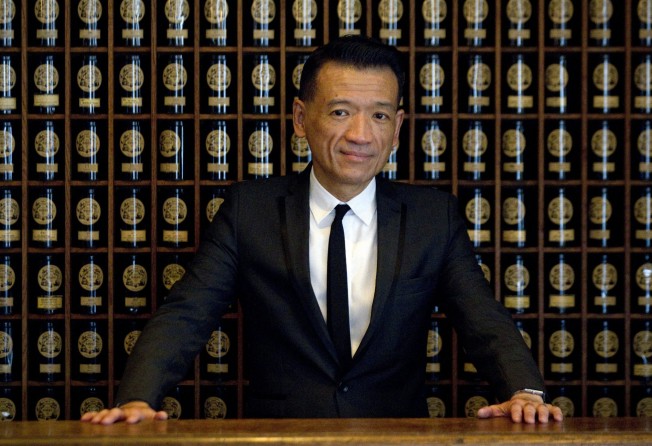
Unable to travel to the tea-growing regions of China, the two men went to Hong Kong, where they tasted infusions unknown and unavailable in France. Among the discoveries on that 1983 trip was a range of delicate teas with silvery-white leaves. Having no name in French, Sangmanee christened it thé blanc, “white tea”.
The trip was a success. The team saw that it would be possible to bring interesting and excellent new teas to France, they just had to find a market beyond the existing tiny handful of connoisseurs.
Back in Paris, they were met with hesitation from their retailers. Such teas were expensive and required more precision in preparing. While Mariage Frères had never sold teas under its own name, they told Cottin that the only option was to open the warehouse to customers, and to offer teas via mail order.
“What?” a shocked Cottin replied. “Customers rummaging among the tea chests right on these premises, only to buy 100 grams of a tea that they can sample at the counter? Madness.”
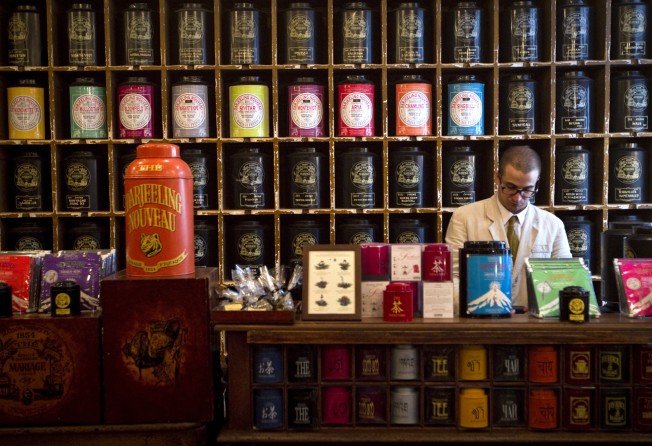
But eventually, she agreed. “No one could imagine that in the heart of Paris something like this existed,” says Desains, who was an early customer and joined the company a few years later, in 1987. “It was much more than just opening a warehouse. It was like opening a museum. Touching knowledge, touching the profoundness of what it was.
“And people understood that, that it was not fake, that it was authentic and real. And it’s still going on, with beautiful products.”
The shift was a success but a hurdle soon appeared. Cottin did not own the building, and they had to move. Bueno and Sangmanee decided to remain in the Marais, and found a warehouse some blocks away. They took the long oak counter, the little glassed office where a clerk once sat and other furnishings to retain the original atmosphere.
On August 1, 1985, the new shop opened on rue du Bourg-Tibourg with 250 teas on offer, 100 of them new imports.
They were treated as crazy when they opened their first counter in Tokyo, at the risk of offending sensibilities of identity
When Bueno and Sangmanee were working out the shape that Mariage Frères 2.0 might take, they travelled around Europe looking for models, only to find a limited range of meagre quality teas being sold as an ordinary drink, even in the finest London tea rooms. Not exactly the niche they needed.
So instead, they looked to French wine selling, treating tea as a luxurious product deeply rooted in terroir and ancient traditions; something unique and special. They called their approach The French Art of Tea, and then later, more simply, French Tea.
A core tenet was to source the finest harvests, which required extensive travel. Bueno, Sangmanee and then later Desains (Bueno died in 1995) would spend six months a year visiting tea producers. In particular, they liked to work closely with producers on exclusive, top-notch micro-productions.
“This is when the magic happens,” Desains explains over tea in the Étoile branch of Mariage Frères, near the Arc de Triomphe. While the growers had the perspective of the fields and production, they brought from France that of the end point, in how the tea was being interacted with thousands of kilometres away.
Presenting those unique teas in a stylish way that could capture their magic was vital. The signature lacquered black tins with a crested, pale-yellow logo are instantly recognisable.
But there was also something less tangible: language. Tea deserved a better, more evocative vocabulary. Following their wine model, they described the teas in precise but poetic ways imbued with romance and emotion. Take the catalogue entries for the Chinese black tea with remarkable rose notes and a smoked Japanese green tea that Desains and I were sipping:
Rose de Porcelaine: The cup is bright red, the liquor gives off an intense fragrance, and its taste is sweet and mild with a rare scent of rose, slightly spicy and peppery. A pleasure for all the senses, as delicate as a work of art.
Smoky Sakura: A voyage for the senses. This grand tea is smoked with Japanese cherrywood using artisanal methods. The delicate liquor floods the palate with woody notes accentuated by fragrant wisps of incense and licorice.
“We know the work from the gardens, from the planters, from the pluckers, from the processing, all that,” says Desains. “It is so much work. And it is hundreds and hundreds of years of history, thousands of years of culture. We want to offer tea in the nicest way possible because we know where it comes from.”

Selling tea was only part of the new Mariage Frères vision. In 1986, it opened a salon de thé in the Marais store. “Isabelle Adjani began to come to the Bourg-Tibourg salon, and Daniel Day-Lewis, the whole world of fashion,” Sangmanee told L’Uomo Vogue in 2014. “Claudia Schiffer was so much a habituée that we got letters addressed to her.”
The menu offered more than pots of tea. Mariage Frères developed a dual concept of using tea as a culinary ingredient and in pairing dishes with the infusions. Today, four of their Paris teahouses serve cuisine au thé.
My lunch at the Étoile locale began with salmon tartare seasoned with roasted sesame seeds and thé sur le Nil, a green tea with citrus fruits, vanilla and lemongrass. Next came a superb polenta-stuffed chicken breast infused with Earl Grey Provence, a black tea scented with bergamot and wild lavender, that gave the red beetroot glaze a delightful zestiness. Each course came paired with tea.
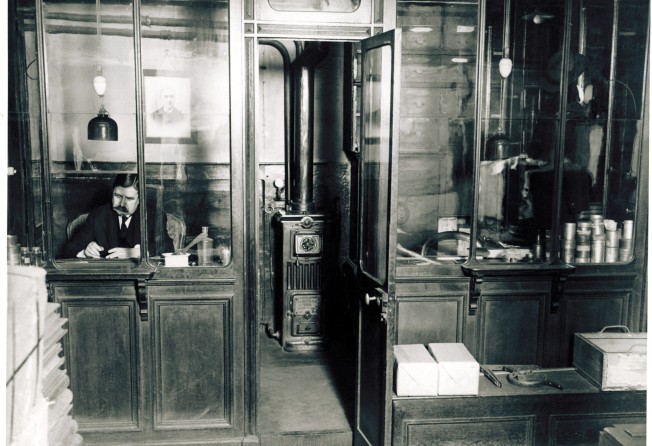
“Clients often know the world of tea, but we want to show them something new,” the waiter told me when I ordered for dessert the decadent cheesecake made with Summer Snow, a green tea scented with wild berries. Steering me away from teas that I knew, he suggested a pot of Blanc Jasmine, a delicate Chinese silver needle tea scented with jasmine blossoms that had just arrived that week.
Just as with wine, the goal of tea pairing is to enhance the gastronomic experience, to complement the dish and to highlight certain flavours. Each of the three pairings did just that.
It wasn’t long before Mariage Frères took its approach beyond France’s borders. In 1989, they opened on the ground floor of Bloomingdale’s in New York and then in 1990 made a bolder move with a shop in Tokyo. Today there are 17 outposts in Japan, including a five-storey Ginza flagship.
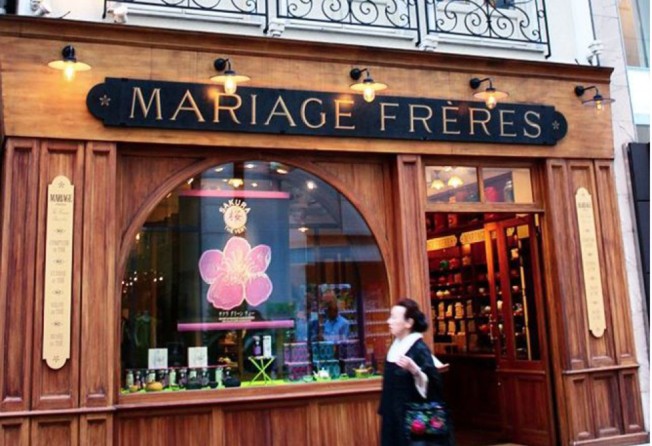
“They were treated as crazy when they opened their first counter in Tokyo, at the risk of offending sensibilities of identity,” reported Elle magazine. “But far from seeing it as a kind of interference, Japanese customers have instead flocked to their native green teas, which they have been able to rediscover through the prism of a different sensibility.”
That sensibility is the creative, romantic elegance that symbolises the French lifestyle and is at the heart of the Mariage Frères approach.
Arguably more daunting was opening in Britain, the heartland of European tea culture, with a concession on the ground floor of Selfridges, the grand British department store in London, in 2012. In 2019, in a direct challenge to London’s other pre-eminent tea merchants, they opened a five-storey Georgian town house in Covent Garden that offers, along with its range of teas, a salon de thé, tea museum and private dining rooms.
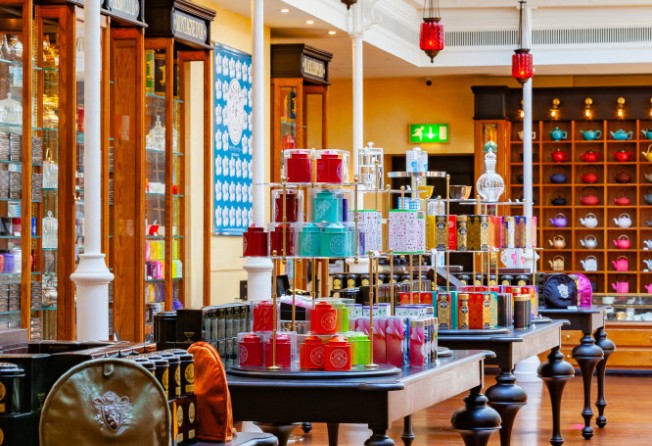
“I have never been interested in volumes, I don’t want to become the Starbucks of tea, I want to be the maximum of originality, preserving and enhancing tradition,” Sangmanee said in 2014. Expansion remains cautious. Every element is done in-house, from sourcing and tasting to package designs and marketing.
There is no franchising. Rather, between 1,600 and 1,700 select retailers around the globe currently stock their tea, while many top hotels and restaurants serve it. France remains the key market, accounting for a little over half of total sales, but in Hong Kong, try Lane Crawford, City’super, Maison ES and Agnés b.
Forty years ago, the company was barely breaking even. In 2007, Mariage Frères sold 380 tonnes of tea. By 2018, it had reached nearly 1,000 tonnes. While all 50 of the boutiques it operates were forced to close during the Covid-19 lockdown, growth surged more than 100 per cent from online sales, tea being a comforting, familiar drink to help endure lockdowns.
And with so many varieties, it also encourages experimenting, and in that, Mariage Frères excels, offering among its choices many blends and flavoured teas. It does not use essential oils for flavouring, but natural ingredients, namely flowers.
The first of these new teas in the post-Mariage family era was Marco Polo, a blended black tea with wild flowers from China: created in 1984, it is still the most popular.
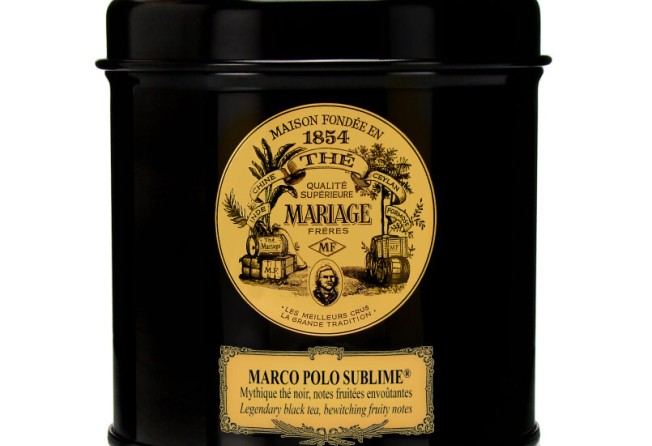
In 2004, to celebrate the company’s 150th anniversary, it created a tea with blue flowers and orchids that gave the liquor a bluish colour. The novelty caught on, and today, Mariage Frères offers about 50 blue teas, including a Marco Polo Blue and the popular Thé Bleu des Légendes, made with an organic oolong from China.
“We have no boundaries whatsoever when it makes sense for what we like,” says Desains. To illustrate, the director tells a story about drinking an artisanal tea along the Chinese-Myanmar border that had been dried and rolled at home, and then pan-roasted and prepared with salt and sesame seeds.
“There is no one real, real taste of tea. There are thousands and thousands of tastes of tea. And this is the history of tea. It depends on each village, each family,” he says of the incredible diversity of teas found in China. “No one can say this is not the way you should drink tea, this is not the way you should prepare tea. Because its history is long, long, long. It was not invented in the 19th century.”
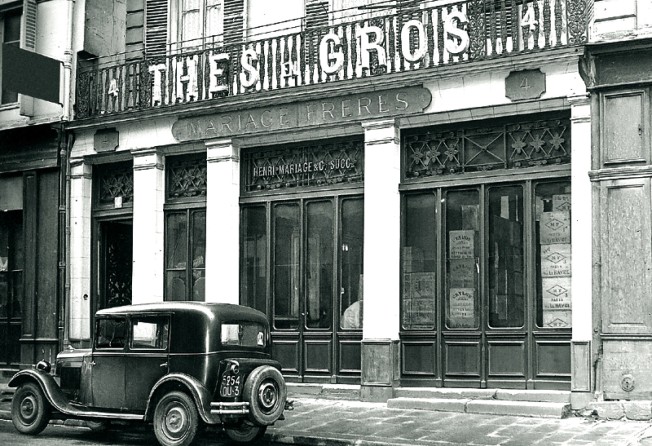
Yet, he stresses, they move only slowly and studiously with new products, drawing on a deep knowledge and understanding of tea’s origins, a respect for traditions. Even in the face of such originality, they hew to authenticity.
At lunch, the waiter had suggested pairing my shrimp tartare with Thé Bleu des Légendes. While the indigo colour of the tea in the white porcelain cup was initially surprising, the flavours were subtle, smooth and delicious. The novelty, even distraction, of its colour quickly faded, but the memory of its taste lingered, from a centuries-old China to the contemporary French capital.
“When it’s real,” Desains says, “people feel it.” Or rather, they taste it.